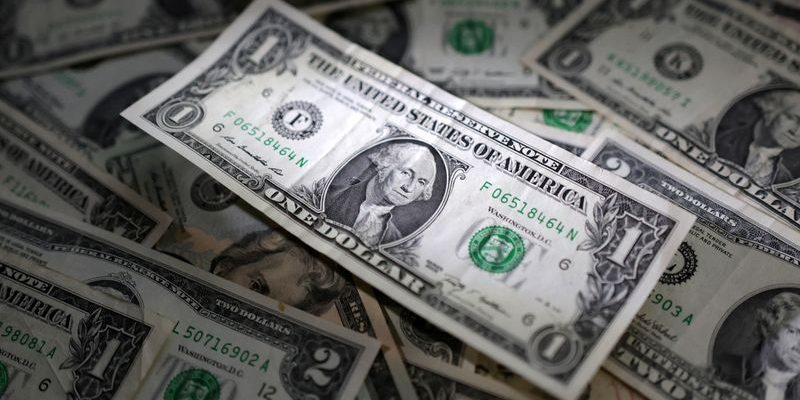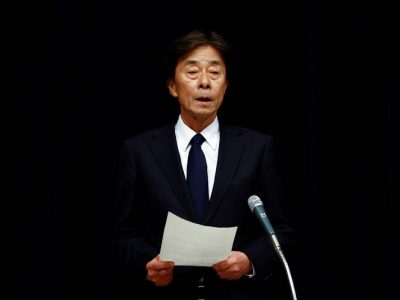
A look at the day ahead in U.S. and global markets from Mike Dolan
The dollar continues to feed on a mix of post-election tariff and tax cut speculation, China’s struggle with deflation and Germany’s simmering political crisis – with the euro plumbing its lowest levels in almost five months.
Even with bond markets effectively shut on Monday (NASDAQ:MNDY) for the Veteran’s Day holiday, the dollar built on last week’s election-related surge – spurred by Friday’s reports, later denied by other sources, that protectionist Robert Lighthizer had already been asked to be President-elect Donald Trump’s new trade chief.
During Trump’s first term, Lighthizer was a key figure behind tariffs on Chinese imports and the renegotiation of the North American Free Trade Agreement with Mexico and Canada.
With the final results of the House Of Representatives elections still awaited but widely expected to complete a Republican ‘clean sweep’ of White House and Congress, attention has now switched to names of the unfolding Trump team.
Ironically, while Trump tariff speculation is seen as a dollar positive, Lighthizer is also seen as a big advocate of a weaker dollar to aide trade competitiveness and reports earlier in the year said he and others were seeking ways to devalue the currency.
Yet, with only vague ideas of how that could be engineered, the market seems happy just to lean toward a straight tariff read-across instead and the dollar index rose to within a whisker of last week’s 4-month highs on Monday.
Prominent investor Scott Bessent met with Donald Trump on Friday, meantime, as he and fellow investor John Paulson emerge as leading candidates for the key role of Treasury Secretary.
Leading the retreat against the dollar were the euro and China’s offshore yuan, the latter hit by yet another wave of investor disappointment at Beijing’s debt-raising stimulus plans on Friday and then the worryingly sub-forecast weekend inflation news there.
China’s consumer prices rose at the slowest pace in four months in October at an annual rate of just 0.3% – while producer price deflation deepened to as much as 2.9% in the year through last month.
Offset by U.S. tariff fears, markets were under-whelmed by the latest stimulus from the country’s top legislative body, which approved a 10 trillion yuan ($1.4 trillion) package on Friday to ease local government “hidden debt” burdens.
But new bank lending in China fell more than expected in October from the previous month and trailed behind analysts’ expectations as the latest wave of policy stimulus has failed to boost credit demand.
Hong Kong’s benchmark Hang Seng Index fell more than 1% on Monday to its lowest since Oct. 18, although mainland shares eked out a modest gain.
GERMAN GOVERNMENT CRISIS
The euro was the other mover, dragged by both fears of universal tariffs and the backwash from any direct hit to Chinese demand as well as an unfolding German political crisis that could see snap elections there early in the new year.
German Chancellor Olaf Scholz and Trump spoke on Sunday evening to exchange views on bilateral relations and geopolitical challenges, but Scholz had more pressing issues at home and said he would be willing to call a vote of confidence in parliament before Christmas.
That timing is earlier than the January date he had proposed last week, suggesting the March timeline for an election could be brought forward too.
Taking in the combination of U.S. and China risks for the European economy since last week’s Trump victory, Deutsche Bank (ETR:DBKGn) cut its forecast for the ‘terminal’ European Central Bank interest rate in this cycle by half a point to 1.5%.
European stocks, meantime, were up about 1% on Monday.
Back on Wall Street, so-called ‘Trump trades’ continue to play out. Bitcoin soared to a record high above $81,000 on Monday on expectations the crypto industry will boom in a favourable regulatory environment during a Trump administration and as pro-crypto candidates get elected to Congress.
And U.S. stock futures continued to push higher ahead of today’s open after Friday saw the S&P500 nose above 6,000 for the first time ever.
Alongside the focus on the new political team in Washington, markets will this week home in on the October consumer price and retail sales reports and the tail end of another forecast-beating corporate earnings season.
While the Federal Reserve delivered another quarter-point interest rate cut as expected last week, the jury remains out on the extent to which Trump’s tariffs and tax cuts aggravate the inflation picture ahead. Only three more quarter-point rate cuts are now fully priced by the end of next year – 100 basis points less that the Fed itself had been indicating only in September.
Key developments that should provide more direction to U.S. markets later on Monday:
* Veterans Day Holiday shuts U.S. Federal offices, cash bond market. Stock market remains open
* Mexico September Industrial Output, October consumer confidence
* US corporate earnings: Live Nation Entertainment (NYSE:LYV)
(By Mike Dolan,; mike.dolan@thomsonreuters.com; Editing by Toby Chopra)












